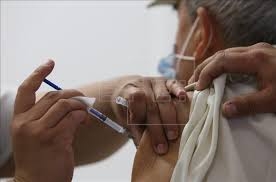Learn about the influenza virus
Submitted by Hector J. Alonso Quiñones on
In 2009 we saw the global hysteria that can take hold after an uncontrolled influenza outbreak. The disease caused by the H1N1 virus, known as swine flu, infected hundreds of millions of people around the world. In the United States, recent estimates show that the virus may have infected up to 90 million people and claimed around 12,500 lives.
Interestingly, even if they seem dramatic, these figures are on par with what is expected from a normal flu season. What made the 2009 season stand out from previous years, in addition to its wide dissemination, was the rise in mortality in people under 65. While normally 20% of deaths occur in people under 65 years of age, during this pandemic around 80% of the deaths were in children and adults under 65 years. This change in the spread and development of the disease was the result of mutations in the virus that made it more dangerous for a healthy person, taking the life of individuals whose immune systems typically would have fought back. Influenza viruses mutate and transform all the time and it is precisely because of these mutations that it is difficult to eradicate the disease or protect against it.
The influenza virus has been around for a long time. Every year, during the winter time, there is an increase in cases of influenza around the world, especially in areas where temperatures drop and humidity decreases, because the virus appears to be more stable under these conditions. The influenza virus is transmitted from person to person through air particles emitted by sneezing or coughing or by contact with surfaces infected previously with the virus.
What are the symptoms? A person infected with this virus usually presents with fever, muscle pain, headache, sore throat and/or a cough. The symptoms usually last for a period of one to two weeks and are not very different from those of a common cold.
So what makes it so dangerous? What makes the influenza potentially lethal are the complications that could arise, such as pneumonia, an infection that causes inflammation and fluid accumulation in the lungs affecting the ability of the individual to breathe normally. There are certain groups of people more likely to develop severe complications including people with weakened immune systems or who have chronic conditions. This can prevent them from efficiently fighting infection. Those susceptible to influenza-related complications include infants, pregnant women, the elderly, obese people, and persons with diabetes, HIV, asthma, or heart problems.
The Centers for Disease Control and Prevention (CDC) recommends annual vaccination for prevention against influenza for anyone over 6 months old. The reason that vaccination should be annual and not once in a lifetime is due to the fact that the virus constantly mutates. Imagine hypothetically that the virus is represented by a padlock. The vaccine, the key in this case, is created by scientists who work hard to decipher what is the genetic profile of the virus this year and how the symptoms will manifest in the population. However, next year the virus manages to change lock, leading scientists to find another key to the lock. Generally, according to the CDC, the vaccine is effective in 40%-60% of the population.
The vaccine this season is already on the market and is covered by many insurance plans. You can get it at pharmacies like Walgreens or at your nearest vaccination center. Since we are entering the flu season this year, it is important to get vaccinated as soon as possible. For more information about the vaccine, you can reach out to the Division of Immunization of the Health Department through the phone number 787-765-2929 ext 3338/3337.
Written by Héctor Alonso Quiñones, Student of Medicine of the Medical Sciences Campus, University of Puerto Rico.
References:
http://www.salud.gov.pr/Sobre-tu-Salud/Pages/Condiciones/Influenza.aspx
http://www.who.int/topics/influenza/en/
http://www.cdc.gov/flu/about/season/flu-season-2015-2016.htm
http://www.cdc.gov/flu/about/qa/vaccineeffect.htm
http://www.cdc.gov/flu/professionals/vaccination/effectiveness-studies.htm
http://journals.plos.org/plospathogens/article?id=10.1371/journal.ppat.0030151









